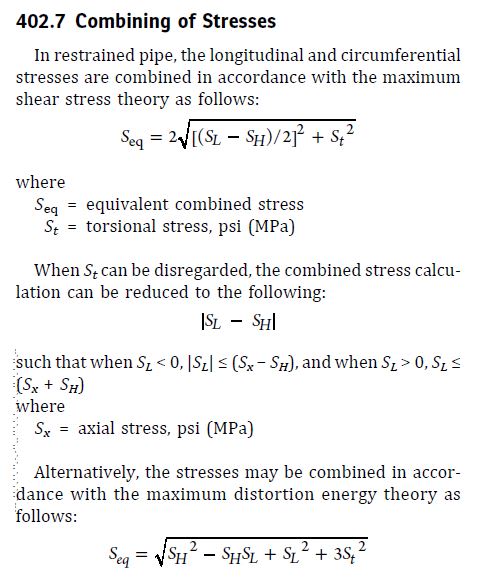AlbertaMecchie
Mechanical
- Feb 17, 2021
- 19
Hi,
I am using ASCE buried pipeline guidelines to evaluate stresses in a buried slurry pipeline.
I have determined the through wall bending stress from earth and live loads, hoop stress from internal pressure, and then compressive thermal stress due to thermal expansion and hoop stress. Wall crush check and ring buckling check is OK.
ASCE gives criteria the following criteria under Appendix A:
- Hoop stress to be within allowable by code - My code is B31.4 and stress is within allowable
- Through wall bending stress < ).5* Yield stress - Stress passes
- Thermal expansion for secondary loading - Within B31.4 code allowable
My question is, do these stresses somehow have to be combined to determine some kind of equivalent stress, or is it sufficient if they are within allowable independently ? The ASCE guideline doesn't seem too clear on this.
I am using ASCE buried pipeline guidelines to evaluate stresses in a buried slurry pipeline.
I have determined the through wall bending stress from earth and live loads, hoop stress from internal pressure, and then compressive thermal stress due to thermal expansion and hoop stress. Wall crush check and ring buckling check is OK.
ASCE gives criteria the following criteria under Appendix A:
- Hoop stress to be within allowable by code - My code is B31.4 and stress is within allowable
- Through wall bending stress < ).5* Yield stress - Stress passes
- Thermal expansion for secondary loading - Within B31.4 code allowable
My question is, do these stresses somehow have to be combined to determine some kind of equivalent stress, or is it sufficient if they are within allowable independently ? The ASCE guideline doesn't seem too clear on this.

